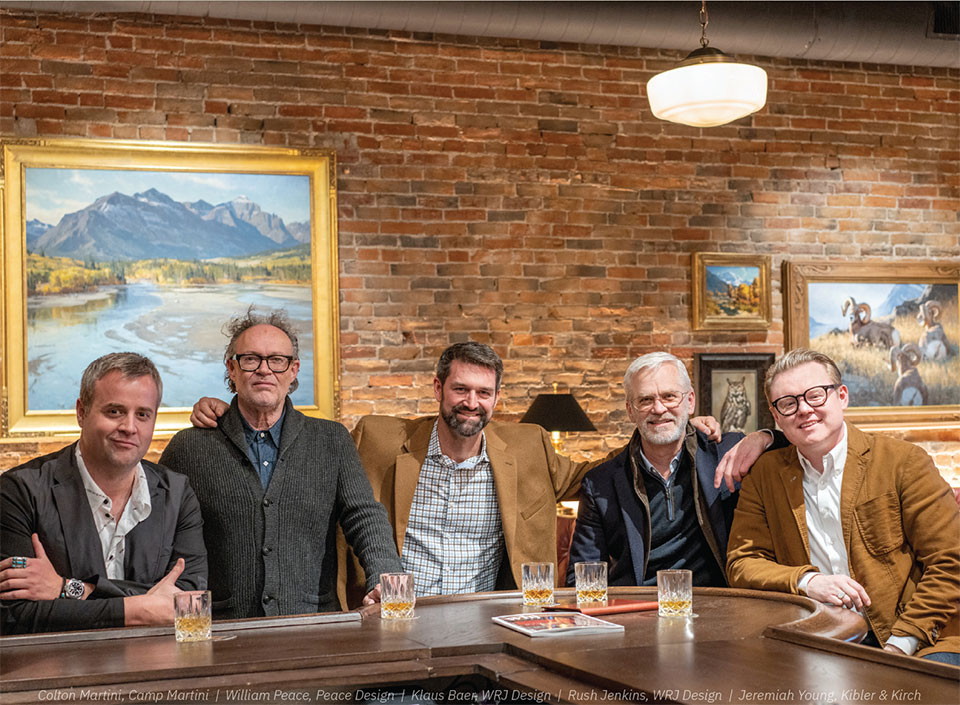Leading Men of Western Interior Design
Moderated & edited by Aaron Kampfe
Location photography by Kene Sperry
In a profession dominated by women, a set of men stand out as leading interior designers in the American West. WHJ introduces readers to five designers whose influences are rooted in the West but who have made impacts coast to coast. Their firms have garnered national attention and awards, influencing design from the ranches and ski enclaves of the Rockies, to flats in New York City, to executive residences in California.
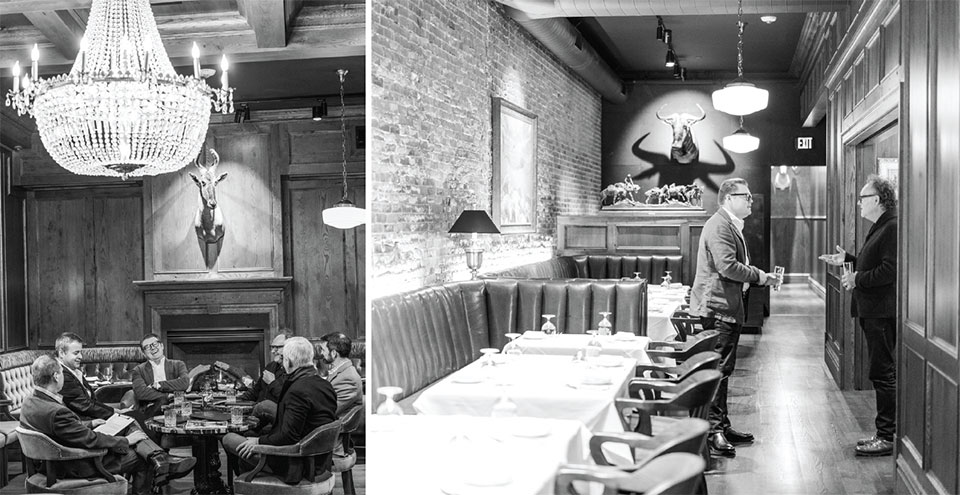
Meet the Round Table panel:

With an interior design career that spans decades and the North American continent, William Peace of Peace Design has a breadth and diversity of work that reflects the passions and authenticity of the firm’s clients. Bill’s professional journey has led him to study art, architecture, and design at the University of Kentucky; found a design firm in Atlanta; expand the firm’s footprint in the American West; and establish a satellite studio in Bozeman. A nationally recognized, globe-trotting, and award-winning designer, Bill Peace is as comfortable in a suit at a New York City gala as he is in boots at an Old Saloon concert in Emigrant, Montana.
A native of eastern Montana, Colton Martini grew up on a horse ranch outside of Sidney, near the North Dakota border. After high school, he headed to Montana’s western mountains where he studied architecture at Montana State University in Bozeman. After working for over ten years for Whitefish-based interior design firms in northwest Montana, he founded his own company, Camp Martini, in 2018. Originating from the Camp Martini studios in Lakeside, along the shores of Flathead Lake, the firm’s portfolio stretches from the Flathead Valley to Big Sky to southern California. A world traveler and student of culture, Colton’s design inspirations are eclectic but always appropriate for the region, in tune with the clients’ sensibilities, and a result of stakeholder collaboration.
Creative Director and Principal of Kibler & Kirch, Jeremiah Young’s passion for well-made interiors goes back decades. In 1994, he walked into Kibler & Kirch’s then storefront on the main street in Red Lodge, Montana, and was enamored with the sense of quality he found there. Little did he know that he would have the opportunity, the background, and experience to run the business many years later—broadly expanding its portfolio and deepening its expertise. Raised in Tennessee, Jeremiah brings traditional sensibilities and classical design principles to all of his work. Based in downtown Billings and working across the Mountain West, the firm focuses on comfortable and timeless designs across a spectrum of styles: rustic, traditional, and modern.
Rush Jenkins, CEO and Co-founder of WRJ Design, has worked in the industry for over 40 years, but his design aesthetic was formed much earlier. Rush grew up in southeast Idaho, and his palette was informed by the natural environment of the nearby Teton Mountain Range and the rolling acreage of his family’s farmland. He earned a degree in landscape architecture from Cal Poly and practiced landscape architecture for ten years. Rush’s life journey brought him to the Sotheby’s Institute of Art in London, which led to a position as the Director of Design for Sotheby’s New York auction house. Among his notable career highlights is leading the design for exhibitions for the collections of many American luminaries. In 2010 Rush co-founded WRJ Design and in 2013 returned to his Western roots with his partner, now husband, Klaus Baer. The firm’s studio is just off the town square in Jackson, Wyoming.
Klaus Baer has channeled his decades of experience managing international production teams for investment banking firms into overseeing all operational and technological aspects of WRJ Design. After earning his bachelor’s degree from the University of North Carolina at Chapel Hill, Klaus segued from banking to design by earning an interior design graduate degree from Parsons, The New School for Design in Manhattan. Today this translates into his passions for constantly retaining the interior architecture and operation of the firm. This includes focusing on helping the team improve leadership skills, professional development, and tech training.
At the J.W. Heist Steakhouse in downtown Bozeman, Aaron Kampfe of WHJ hosts the panel. With whiskey in hand, the discussion begins:

whj : (Aaron Kampfe): What is distinctive about working in the West?
Bill Peace (Peace Design): The West draws an interesting set of people. The vast open spaces and rugged landscapes have a mystery about them. They make people want to explore and reconnect. For many, it’s like a spiritual awakening. This applies to people from all walks of life who end up somehow connected to the West. From ski bums who are living their dreams out on the slopes to the executives who are building their family’s mountain legacy retreats, nature is the draw and the inspiration…and nature in the West is the draw and inspiration for our design work.
Colton Martini (Camp Martini): People do come from all walks of life to our resort destinations in the West. This results in a rich combination of worldviews. From a design perspective, we need to understand what they are bringing with them as well as introduce them to what is regional. Our job is partly to synthesize perspectives and educate.
Bill: People are looking for authenticity. They don’t want to be tourists a few times a year. They want to be integrated into the environment—aesthetically, physically, and socially.
Rush Jenkins (WRJ Design): For me, one of the many great aspects of the interior design industry is that there’s such a wide spectrum of aesthetic styles representing so much talent and creativity. This diversity gives us the challenge to curate the best of what’s out there that may come from or be influenced by all corners of the world, but at the same time remain authentic to the region.
Klaus Baer (WRJ Design): The opportunity we have is to be inspired by the majestic Rocky Mountains and the beauty of the West and looking to nature. We draw much of our inspiration through nature as well as our world travels. We incorporate materials into our projects found in nature like stone, reclaimed timbers, beautiful cashmeres, wools, and mohair.
Jeremiah Young (Kibler & Kirch): There is a design brand of the West and the brand hasn’t developed in a vacuum. It’s eclectic. It begins with what is found in nature—stone, soil, timber, water, animals… Native Americans were using these elements as the first purveyors of Western design. The Europeans and American settlers brought their own classical design principals and construction techniques. The mixing of influences, including those from Hollywood and the mythos of the West, are what we have today. Now we’re adding the best bits of contemporary art and architecture.
Klaus: One interesting and exciting new trend that we’re seeing in the Jackson area is that people are buying or wanting to renovate log homes that were built decades ago. Transforming them with a new vision and breathing new life into them can be a lot of fun and comes with ultimate satisfaction of interpreting a beautiful renovation of that log home.
Bill: In our careers, we have seen the trends move in some extremes. From those ‘90s rustic log homes to the really modern ones, often referred to as “mountain modern.” Another extreme is John Dutton’s house from Yellowstone. People want something more classic, without being their grandmother’s house.
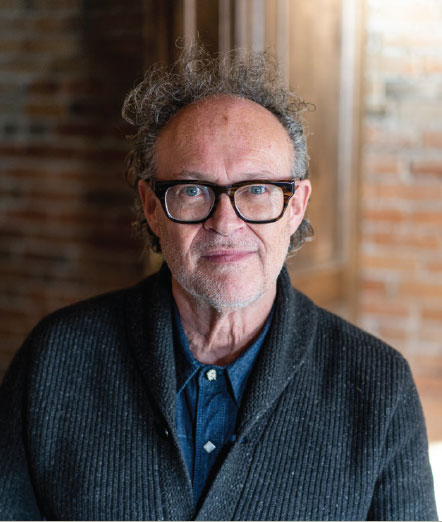
“In the West, much of our work revolves around what goes on outside the home—hunting, fishing, skiing, ranching, and other outdoor activities. A talented interior designer understands these intersections—the indoors and outdoors, recreational pursuits and residential retreats, and personal passions and living spaces.”
-William Peace, Peace Design
Colton: With fewer people working in design in our locations, we stand out. After I’ve done a project for a client here in Montana, they often then ask me to do one somewhere else, maybe their primary residence in California or Texas. I end up bringing some of the Rocky Mountain West to other parts of the world.
whj : What do you like most about your job?
Jeremiah: I love the challenge of stepping outside my comfort zone and not repeating what I’ve done before. Each project is a fresh take on what we can do to speak to our client’s heart.
Colton: I like the experimentation that leads to unexpected discoveries. We are mixing, matching, and trying different combinations until, after many failures, something comes together. That ah-ha moment is pure joy.
Rush: The final reveal of a project is one of the most exciting milestones that we all achieve together. It’s always so much fun to see the looks and the expressions on clients’ faces when they walk through their homes for the first time, sometimes accompanied with tears of joy! It’s rewarding to have the opportunity to help manifest the clients’ hopes and dreams, and oftentimes surpassing their expectations––the biggest compliment we could hope for. A beautifully designed space helps elevate your life on a daily basis. Creating beauty and elevating the daily lives of our clients is one of the greatest gifts we can give as designers.
Jeremiah: The reveal can cause people to cry…. tears of joy.
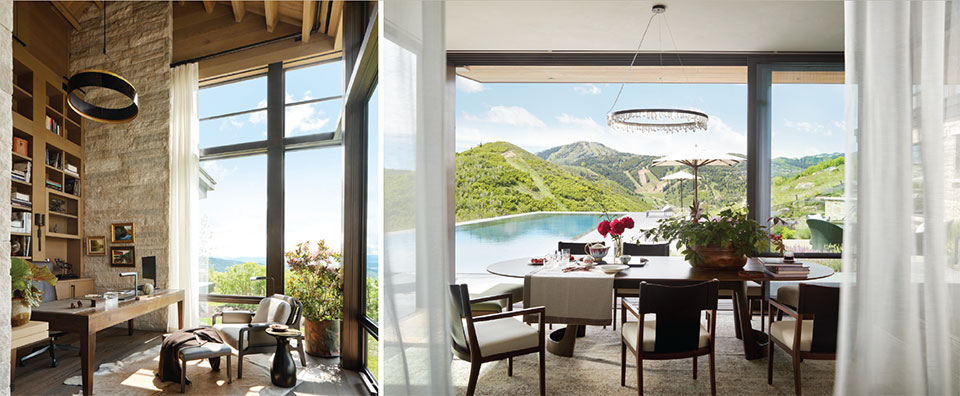
Klaus: We cherish the opportunity to discover through our travels and through our sourcing and to bring an international perspective to our projects. When we have a broad design concept for a home and need to find one-of-a-kind items that will contribute to that theme, we literally may have to scour the planet to find the appropriate objects.
For example, we did a home in Big Sky with a European Swiss chalet influence. We sought out items from the Old World that needed to fit into the New World and the American West. We blended the refined culture of the Alps with the ruggedness of the Rockies. The result was a truly harmonious design.
Bill: Our clients are interesting people with successful careers. Getting to know them and their interests is one of my most favorite parts of what I do.
An example that comes to mind is a client with a ranch estate in Texas who has very eclectic tastes and interests. The project was interesting because the client was interesting. The broad concept was Mediterranean/Cape Dutch architecture with Latin American-inspired materials with all the grandeur that is Texas. We sourced artifacts, furniture, and materials from all over the world and melded these seemingly disparate elements into one cohesive design.
Jeremiah: One thing that I never anticipated is how much I would learn from my clients. We often delve into areas that are not necessarily our expertise but important to the client and project’s ethos. I become well-versed in disciplines that I might not have otherwise and learn new things all the time. I learn about art someone collects or something else they are passionate about. Our job is to make a home for those things.
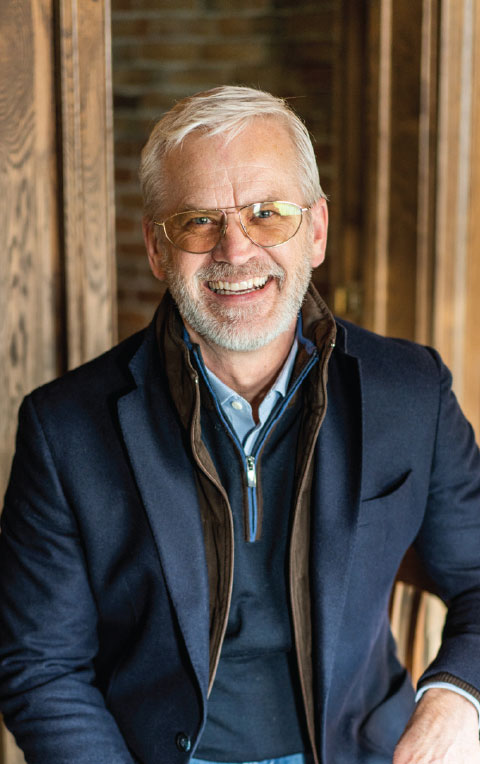
“Initially when seeing a project, people will notice the selections… the furniture pieces, fabrics, window treatments, decorative objects, art pieces… but when one starts to dive deeper, the layers of complexity are revealed and an appreciation for the thought and expertise of the designer is recognized.”
-Rush Jenkins, WRJ Design
Rush: We are often dealing with so many elements that have subjective measurements. The creative journey requires so much trust—trust in scale, trust in process, trust in us. We are offering a gift that changes daily experience and changes lives. We are creating environments that touch people, people’s hearts. The work has emotional, and even spiritual, components. That is why we do what we do.
whj : What is misunderstood about your profession?
Rush: What I think is often misunderstood is what the interior designer brings to the whole. Initially when seeing a project, people will notice the selections… the furniture pieces, fabrics, window treatments, decorative objects, art pieces… but when one starts to dive deeper, the layers of complexity are revealed and an appreciation for the thought and expertise of the designer is recognized.We look at the overall holistic approach and think about the architecture, interiors, and landscape architecture. The value we bring is that all disciplines are considered and are in harmony together.
Colton: For me and my process, understanding the bigger context begins with two core considerations: first, the client, and second, the architecture. Really getting to know the clients—their interests, their passions, their aesthetics—will inform every decision. Next, becoming well-versed in the architecture will inform not just how the space looks, but how it is used and how it flows. Really, how a space feels.
Jeremiah: Our profession of interior design is so underrated. You are literally crafting the human experience through spaces that are experienced every single day. People are trusting us to craft their lives.
Bill: The holistic lens often begins with the environment—not just the built environment, the house—but also the natural environment and the surroundings. In the West, much of our work revolves around what goes on outside the home—hunting, fishing, skiing, ranching, and other outdoor activities. A talented interior designer understands these intersections—the indoors and outdoors, recreational pursuits and residential retreats, and personal passions and living spaces.
Klaus: From our perspective, one misunderstanding is that many people don’t understand the distinction between interior design and interior decorating.
Bill: To put that simply, we’re not just your shopping buddies. [Everyone chuckles.]
Klaus: That said, decorating does have a place, but our professional skills include much more than that. To reiterate Rush’s initial comment: An interior designer considers the project in its entirety. The factors that play a role in our decision-making are comprehensive and complex. Consider the complexity of all disciplines involved: landscape, architecture, building materials, functionality, and aesthetics all influence a final design. Understanding this backdrop is integral to the process before even considering a particular selection. Here is where our lens is both broad and, at the same time, specific. We are constantly considering the interplay between the big picture and the smallest of details.
Colton: Another misconception is that people are hiring us for our taste, our aesthetics. While yes, that is true to a limited extent, really what they are hiring us for is our discernment. What we distill and filter is their vision, not ours. We are guiding them through their process and this process can’t be about only the designer’s personal taste and ego.
Jeremiah: All clients come to us with taste, often great taste. They have interests, preferences, and an assemblage of things that they bring with them. Our job is to help them edit. We are serving clients as their editor. We steer the process and have knowledge of what will work and what won’t. Plus, we have extensive resources of craftspeople, furnishings, and so on.
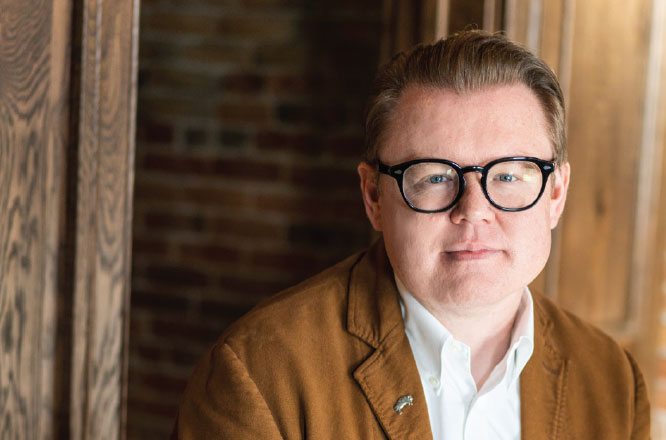
“I avoid trends and try to find the most timeless solution at every turn. I’m a big fan of what’s always worked and always will.”
-Jeremiah Young, Kibler & Kirch
What I tell my clients is that what I’m really going to be is your editor. I’m going to challenge you and your assumptions through the process. We’ll work closely together. In the end, we strive to create a home far better than the one that you or me initially envisioned. When the final work is completed and all voices have been heard, we walk away great friends, with deep appreciation for each other and what we accomplished.
whj : What is the ideal team on a project?
Rush: The ideal team begins with a collaboration of all disciplines. This also applies to our own firm where we have different people with different strengths in different areas. Some are stronger in fabrics and furnishings, others in architecture, others in color palettes, others in construction materials. We’re considering the whole; harnessing each individual’s strengths and passions is a foundation.
Bill: Collaboration with the entire project team is critical but the talent in the studio is what keeps any project moving forward. As leaders in our respective firms, knowing each staff member and their strengths enables us to make it happen successfully. We had an interior designer who didn’t like to draw. Asking her for schematics was like putting a square peg in a round hole. We discovered that she thrived in purchasing, merchandising, and order fulfilment. We found the perfect role for her.
Klaus: Bringing in the interior design team at the inception of a project is not just ideal; it’s really paramount. Often the project begins with the architect, then the builder, maybe the landscape architect, and finally the interior designer, almost like an afterthought. The ideal team is a really strong team where everyone has mutual respect for the other discipline because, as I said earlier, the best projects that we’ve done come about when the team is together from the inception. It’s important because we are able to make suggestions, down to a few inches at times, of space planning that can make a big difference.
Colton: Our interior design lens gets the rest of the project team thinking in ways they might not otherwise. Part of the core of what we do is thinking through how a space is used, used in a very practical way. How does this particular client use a kitchen? Where do people put their muddy boots? Where is the towel rack relative to the shower?
Klaus: Great collaboration between disciplines is very important to ensure all the details are considered. Dissecting and analyzing the architectural plans early on will ensure that we will create an extraordinary home.
Jeremiah: At the end of the day, the personalities and temperaments of the team make or break a project. A few times I’ve worked with very talented people who just were not open and flexible. Conversely, I’ve worked with small architectural firms or smaller builders who worked very collaboratively with us. That is ideal. Chemistry is everything and there’s no room for outsized egos.
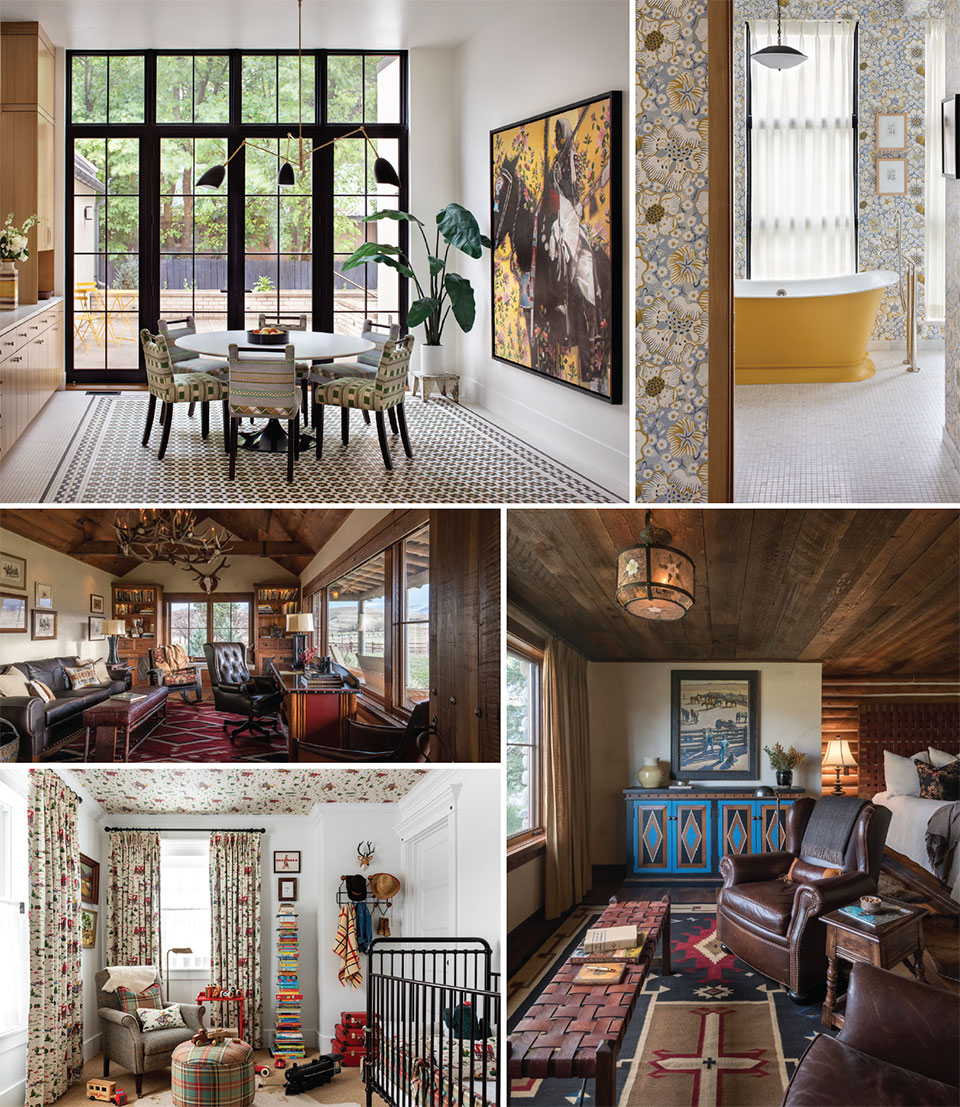
whj : Pick one of your notable projects and share the design narrative.
Bill: A really exciting project is a multi-year, multi-building project in the Yellowstone Club. The site is one of the ranch parcels and the client wanted to start the development with a “saloon,” a landing pad for friends, their two sons, and their buddies. The “barn” has a gun room, golf simulator, bunk rooms, and a saloon complete with a classic western bar, billiards, and poker table. Think of the guys and gals coming in after a day of shooting or skiing, pouring a whiskey, and relaxing at the bar or by the massive stone fireplace. All the while they are enjoying the amazing views of the valley.
Jeremiah: We are 18 months into a ranch project on the east side of the Tetons. The core structure of the development is a 12,000-square-foot lodge. Part of my role is to figure out how to display an extensive art collection, a truly extraordinary collection with some of the best of Western art. I’ve felt honored to be trusted with such a responsibility. We’ve created the most restrained and considered interior that doesn’t upstage the art.
Colton: Sometimes projects take on creative themes, which makes them more interesting and fun. We have a house we call the “treehouse project,” not because it’s literally a treehouse but because it’s a house of the trees. We collaborated with a well-known treehouse design-build firm. We love the clients for their sense of adventure and playful spirit, but this whimsical theme doesn’t distract from the high quality of the project.
Rush: We had the opportunity to create an extraordinary project in Deer Valley, Utah, that has won multiple awards. The client was trusting and respected our expertise, from the exterior to the interior. Many of the decisions went beyond aesthetics and focused on the quality of materials, from the slate roof to the bronze-framed windows to the bathroom slabs. The home blends with the outdoor environment and connects with nature through the use of wood, stone, light, and water.
whj : What makes for a successful collaboration between the interior designer and the architect?
Bill: Starting from day one with like-minded ideals and sharing the same vision make for a great interior designer/architect collaboration. I don’t care who came up with the great idea as long as it’s a great idea—whether it’s me, the architect, the client, or someone else. At the end of the day, it’s about the best result.
One of the most thoughtful architects I’ve worked with is Michael Imber whose firm is based in San Antonio, Texas. He comes to the table with an open mind and the client in the center in every way. From the beginning of this Texas ranch estate project, we started with a shared vision. That vision extended to others involved like the landscape architect, lighting designer, and, of course, our client. Egos were left at the door.
When you drive up to the property you experience the landscape, then you see the architecture, and then you walk into the interiors. All work together seamlessly.
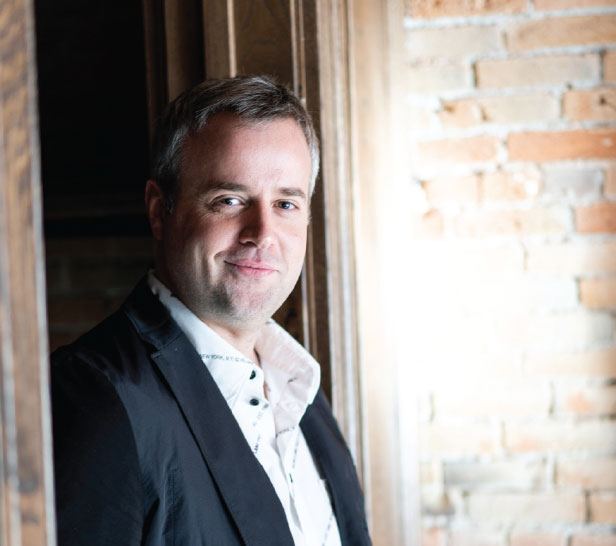
“I find I’m helping people learn how to live here in the West; it’s not just design but lifestyle.”
-Colton Martini, Camp Martini
Colton: Sometimes a client compartmentalizes. The landscape architect is doing the outside. The architect is doing the building plans. The contractor is executing those plans. The interior designer is doing the inside. You can tell when you don’t have a cohesive team. You can tell the difference in the result.
Bill: We all have seen an interesting building and walked in and you say, “What happened?” or visa-versa.
We worked with a landscape architect who in a meeting discussed the tone and texture of the landscape, like the trees and grasses. That stayed in my mind. Those textures from outside informed my choices about the inside.
Rush: When you come into a project from the very beginning, mutual respect is key. Large-scale projects take years. When everyone on the team is working well together, the end result is a cohesive and harmonious home.
Bill: We are fortunate that we have some great architects in the Northern Rockies. Montana State University has a great school of architecture. Over the years, architects from MSU have founded their own firms and influenced Western design. Some that come to mind are Miller-Roodell, Pearson Design Group, Faure-Halvorsen, and CLB.

whj : What is it like working as men in a female-dominated profession?
Colton: Hey Aaron, can you turn the recording off? [Everyone laughs.]
Aaron (WHJ): Maybe everyone needs another shot of whiskey before you answer this particular question? [Everyone chuckles and pours another drink.]
Jeremiah: We are uncommon in our parts of the country as there are not a lot of male interior designers. I see it as a privilege and can bring something different to a project who appeals to a particular type of client.
Rush: In our firm, owned by Klaus and myself, the majority of our designers are female. The great thing for us is that we get the balance between the yin and the yang and the perspective of both men and women in our firm. We are able to have a greater harmony and appeal to clientele when we’re working with a husband and wife because we’re able to understand both perspectives thanks to the diversity of our team.
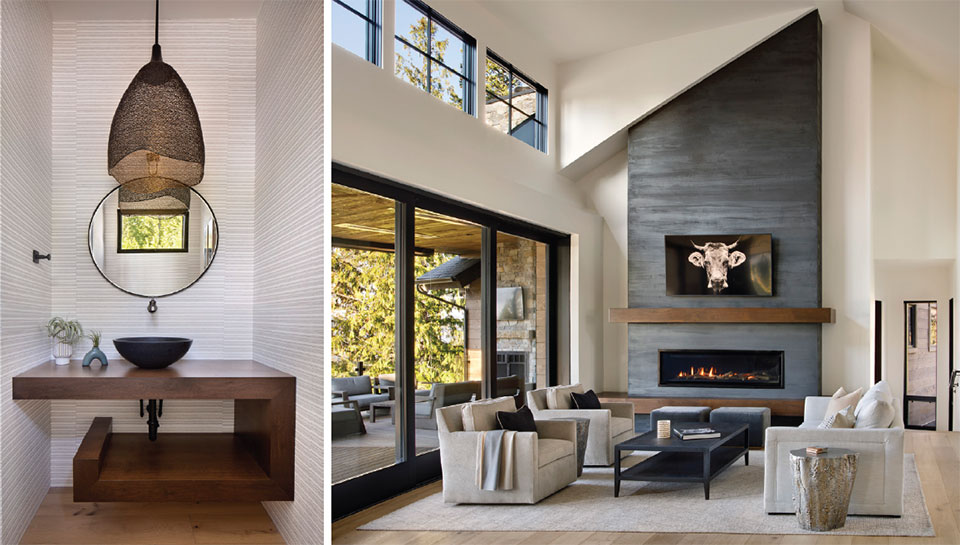
Jeremiah: Women are very comfortable in masculine interiors but the reverse is not necessarily the case.
Bill: The best interiors strike a balance where everyone is comfortable in the space. Understanding a specific space’s audience and function is key. For example, is the “library” a quiet room to read? Or a man-cave to retreat? Or a place for the gals’ book club? Throughout the design process, we’re always considering male and female perspectives and sensibilities—the yin and yang, as Rush references.
Klaus: Men and women have fundamentally different viewpoints of the world, and consequently approach it with very different energies. I see that as a strength to bring both perspectives to the table, which ultimately creates a greater balance.
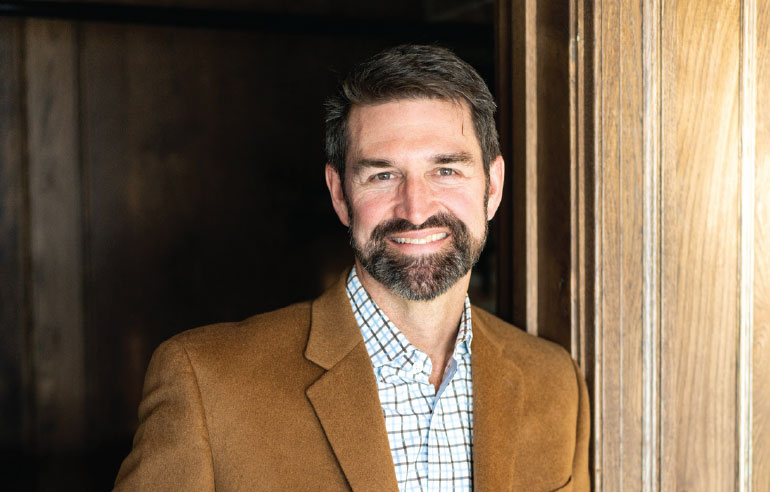
“An interior designer considers the project in its entirety. Consider the complexity of all disciplines involved: landscape, architecture, building materials, functionality, and aesthetics all influence a final design. Understanding this backdrop is integral to the process before even considering a particular selection. Here is where our lens is both broad and, at the same time, specific.”
-Klaus Baer, WRJ Design
Jeremiah: When I’m working with contractors and sub-contractors and walk around a jobsite, I just get inherent respect as a man. Sometimes the female members of the team don’t. I get frustrated with that. I work hard to empower the women in our firm and let our partners know what anyone on our team’s role and influence is.
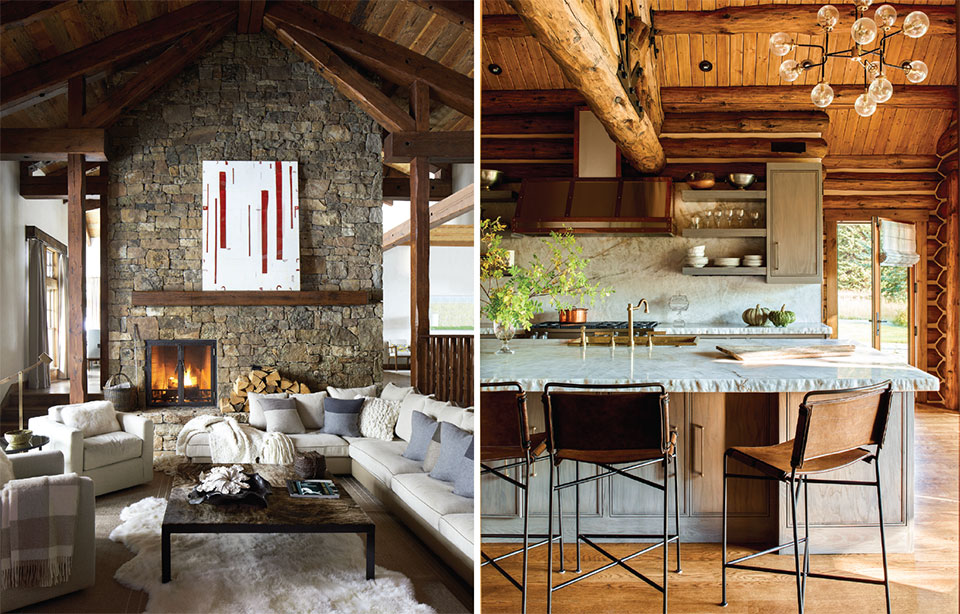
whj : How do you express or articulate the value you bring to a client?
Klaus: Our expertise is rooted in our bank of knowledge and having an understanding of the many options available within a budget and at the same time bringing beauty. These insights enable us to offer great value and maximize their dollars with the best choices possible.
Jeremiah: I avoid trends and try to find the most timeless solution at every turn. I’m a big fan of what’s always worked and always will. Let’s not waste any money or time on anything that will date itself or need to be replaced. Quality always wins.
Rush: For me personally, I bring over 40 years of experience to our projects. I started as a landscape architect, led exhibition design teams at Sotheby’s, and studied fine art. The culmination of this experience, along with Klaus’ operational background, is the ethos of our interior design firm. The value we offer our clients is that we bring a holistic view to a project where everything must come together in harmony. It’s educating our clients on that harmony and what it means when the disciplines of design come together to create a beautiful experience for them.
Bill: I narrow the options and present the remaining good options. I don’t present it unless I think it contributes to the whole in a meaningful way. An example is dining room table choices I recently presented to a client. One was a lower cost, another a medium price, and another a much higher price. Good, better, best. My job was to show them the options, articulate their features, and let them decide.
Colton: What did the client choose?
Bill: The highest priced table, but I could have lived with whatever decision that the client made. I felt good about all three options.
whj : What are some unexpected roles that you’ve played?
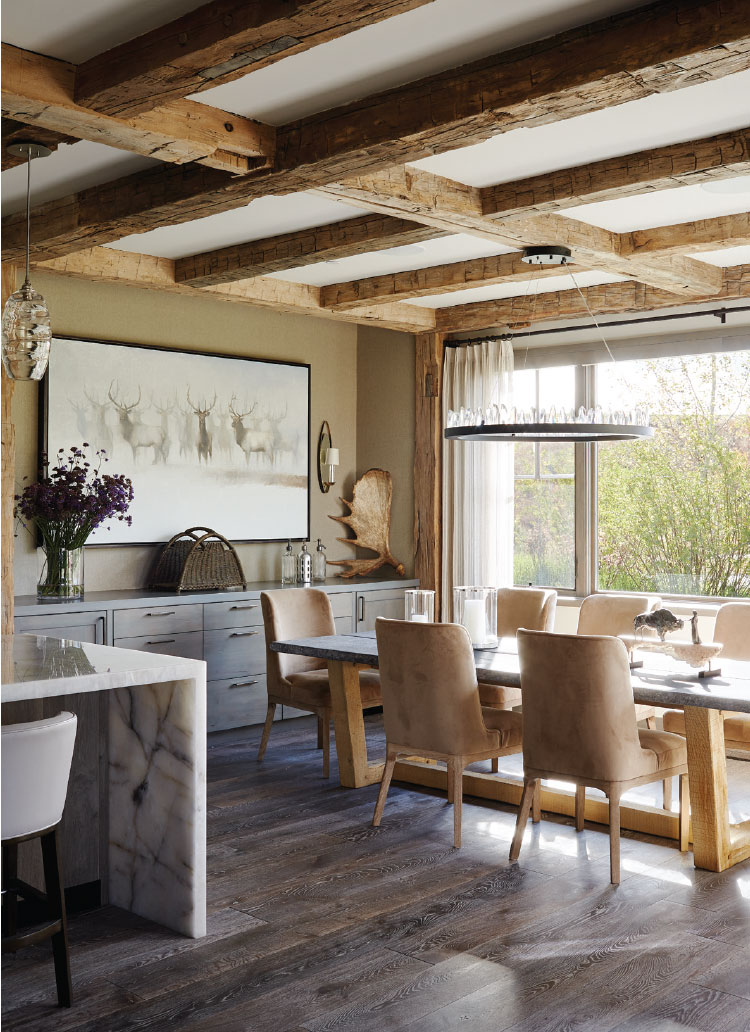
Klaus: Sometimes we have to use a bit of psychology to help ensure that each homeowner’s voice is heard. For example, one partner might have a quieter voice and not vocalize their opinions willingly. Our job is to help elevate both voices so they are heard so we can incorporate each client’s vision into the design.
Jeremiah: So true. I tell our new staff that what we do is 90% psychology and 10% design. Making a home is not for the faint of heart. It brings out lots of emotions.
Bill: My residential work has informed my restaurants like here at J.W. Heist, where we have a comfortable, welcoming feel. Other examples are the restoration of The Old Saloon and Stacey’s Old Faithful. These commercial projects have informed the bars and party spaces for homes we’ve designed.
Klaus: Sometimes it is a delicate balance when dealing with a couple. I try to be an unbiased mediator but certainly not a marriage counselor.
Rush: One of the greatest things we can do for a project is to deeply listen to a client and try to understand their perspective and what resonates with them. We have a great opportunity to become better designers by listening to our clients and their needs. The diversity of those needs varies widely from client to client. While there are a lot of similarities, there are also a lot of differences. Our ability to grow as designers and elevate that design from their needs and their perspective is a great challenge and we love to rise to that challenge.
Colton: I find I’m introducing my clients to the lifestyle of the Rockies. In the Flathead Valley, we have a lake culture which most second homeowners come here for. Sometimes I have to introduce them to the winter lifestyle, and how the locals embrace and love winter. I find I’m helping people learn how to live here; it’s not just design but lifestyle.
